As an Amazon Associate I earn from qualifying purchases.
Harvesting elderberries is a rite of summer or early autumn for people all over the United States, Canada and Europe. Here are some tips and tricks for harvesting elderberries when it’s elderberry season near you.
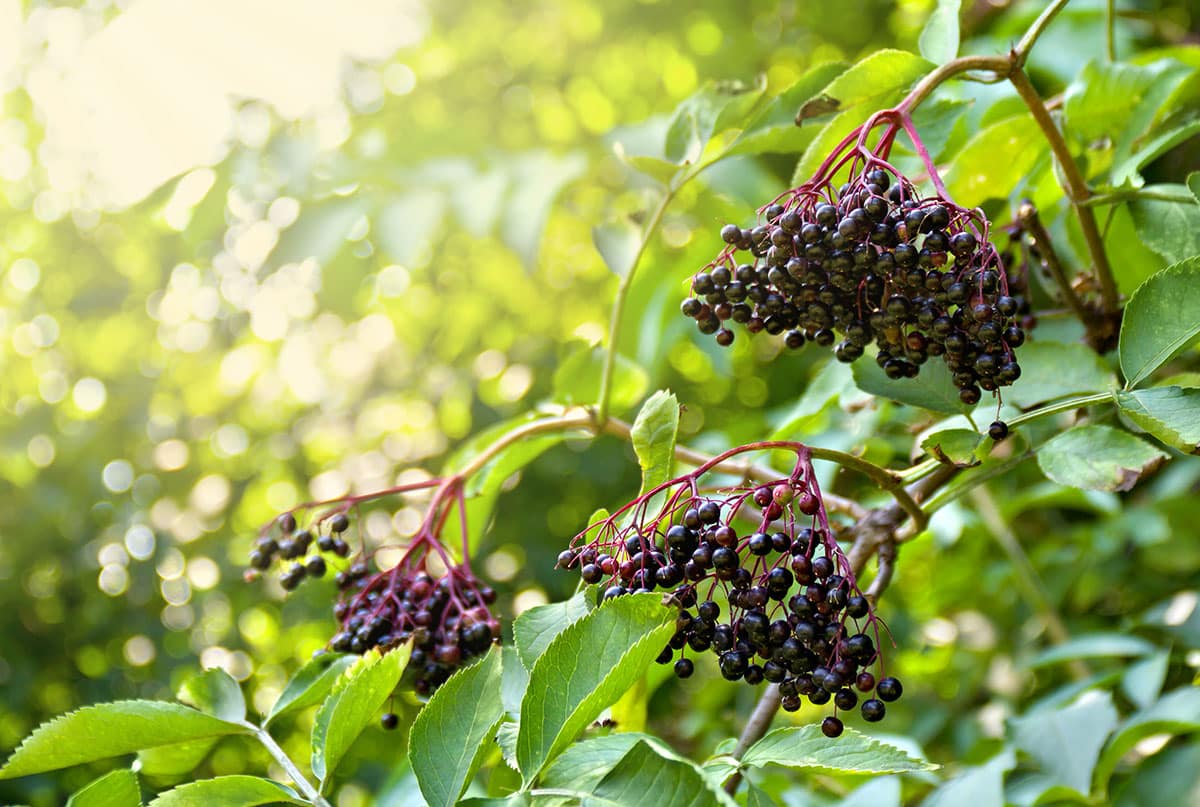
First off, I am talking about black or blue elderberries, which are Sambucus nigra, which has several subspecies. I don’t like red elderberries, which are S. racemosa, but some people do. This article doesn’t cover them.
Second, I am talking about ripe berries, not elderflowers, which come earlier in spring. If that’s what you’re looking for, I have recipes for elderflower cordial, elderflower fritters and elderflower liqueur elsewhere on this site.
Finding Elderberries
Most of the 5o states, as well as parts of Mexico and Canada, as well as all of Europe have elderberries. This guide from the USDA should get you started on finding elderberries.
Elderberries like to live near water, but not be wet. I find them near rivers a lot, on well watered mountainsides, even in large hedgerows in places like France and England. They are a large bush or sometimes a small tree — there’s a 20-foot tree living near my home in Folsom, California.
The berries are on large bunches, and will often droop down when they are getting ripe. I’ve never seen elderberry season start before May, even in Florida, although in recent years things have been ripening earlier and earlier.
In most places, elderberries don’t come ripe until September, but in the South and Southern California they can ripen as early as May, and here in NorCal we start getting ripe elderberries in late June. Elderberry season starts in earnest in the Sierra Nevada in September, as you get higher in altitude.
So depending on where you go, you can get ripe elderberries from May until November.
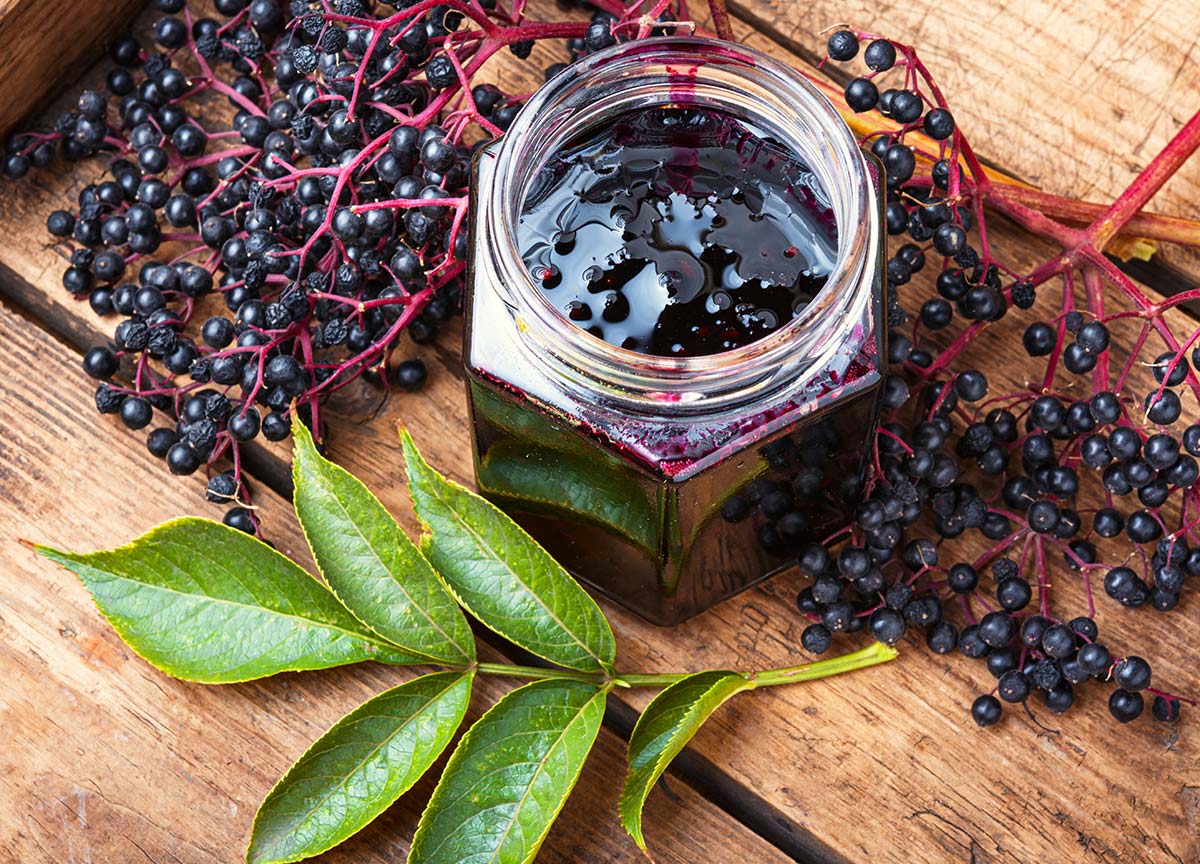
This photo shows elderberry leaves really nicely, as well as the ripe berries. Note the red stems. This is key. Harvesting elderberries before they are fully ripe will give you problems when it comes time to remove them from the stems. Ask me how I know. These are still unripe:
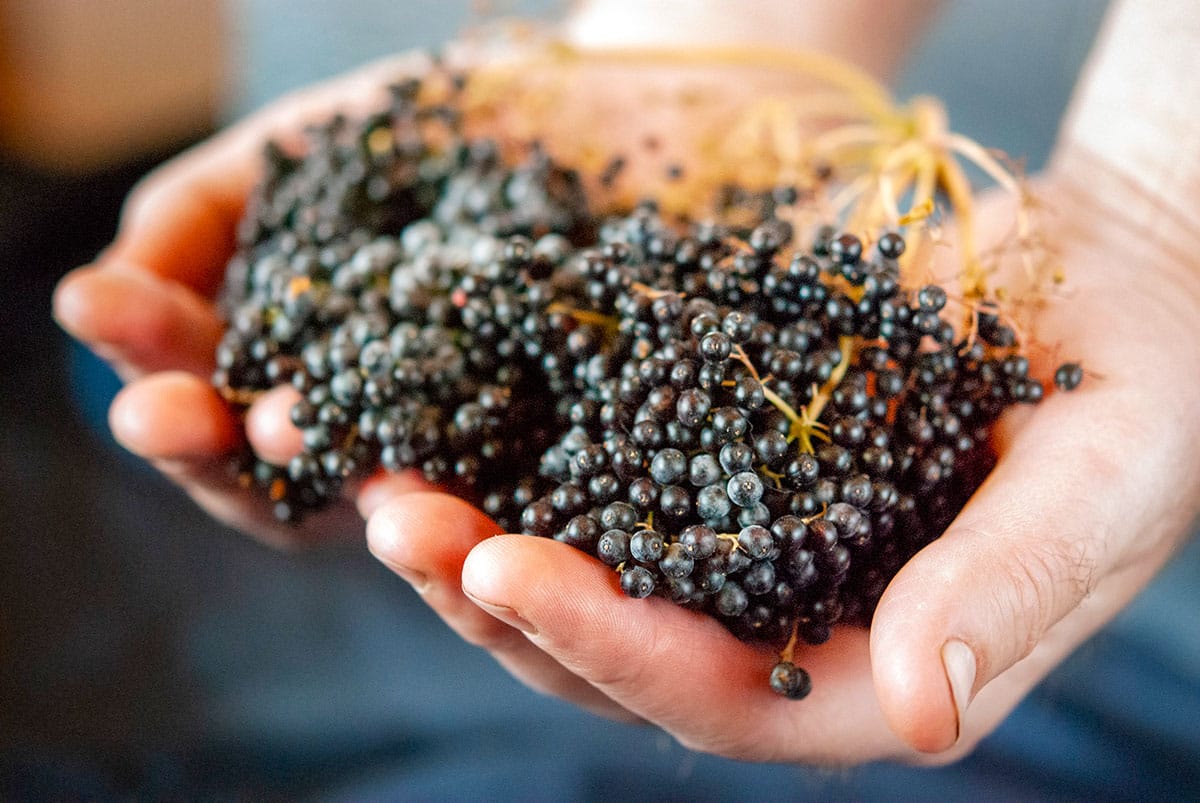
See the green stems? Yeah, they were a bear to get off the stem.
Harvesting Elderberries
The secret to elderberries, it seems, is that they are a rolling bush: Parts of some bushes are still in flower while the berries below have already ripened. Even when I picked my stash of elderflowers in May there were green berries on some.
Incidentally, you should know that the stems and unripe berries are toxic — not horribly so, but you want to minimize them in any elderberry recipe — and some people get an upset stomach eating raw elderberries. I do not, but some I know to.
Beware, slackers! Ripe elderberries are sweet — sweet enough that the deer like them very much. We saw a lot of nibbled-off spots on the bushes while harvesting elderberries in summer. By September I suspect the only remaining elderberries will be too high for the deer to get; and then you need to worry about birds.
I use a knife or scissors to cut off the bunches, collecting them in a paper grocery bag. Gather several bags, so you have plenty to work with.
Once you get your elderberries you need to take the berries off the stem, which can take some time.
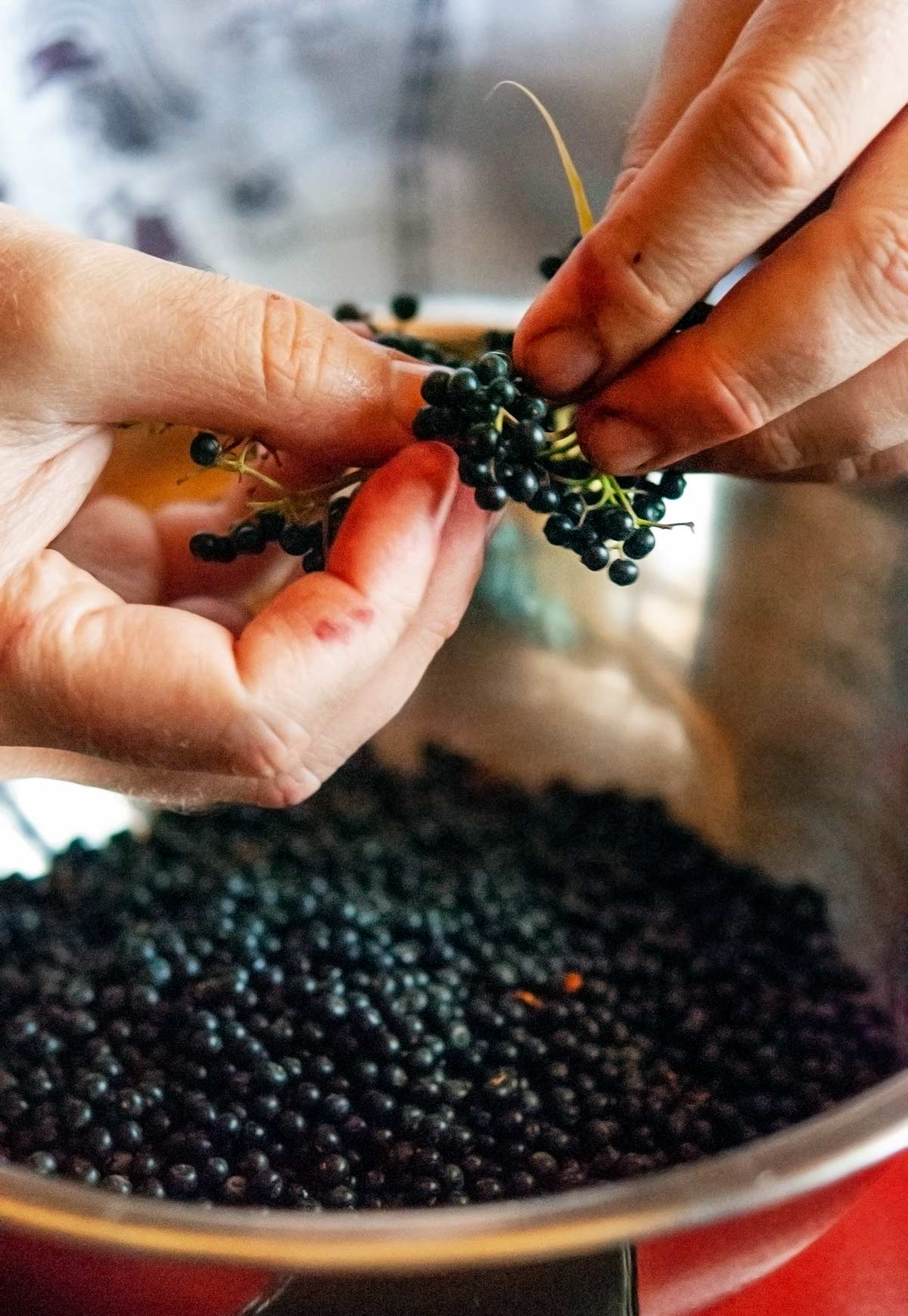
This is the least fun part of dealing with elderberries, but it needs to be done: The stems and leaves of the plant are toxic, and definitely bitter. You need to be patient and have a light hand, however, as the berries are fragile. Work with small portions of each cluster at a time, and gently rake your half-open hand over the berries, letting them fall into a bowl set beneath you.
Again, let me stress the word “gentle.” Unripe berries hold onto the stem, ripe ones fall off easily. And you don’t want to eat unripe berries.
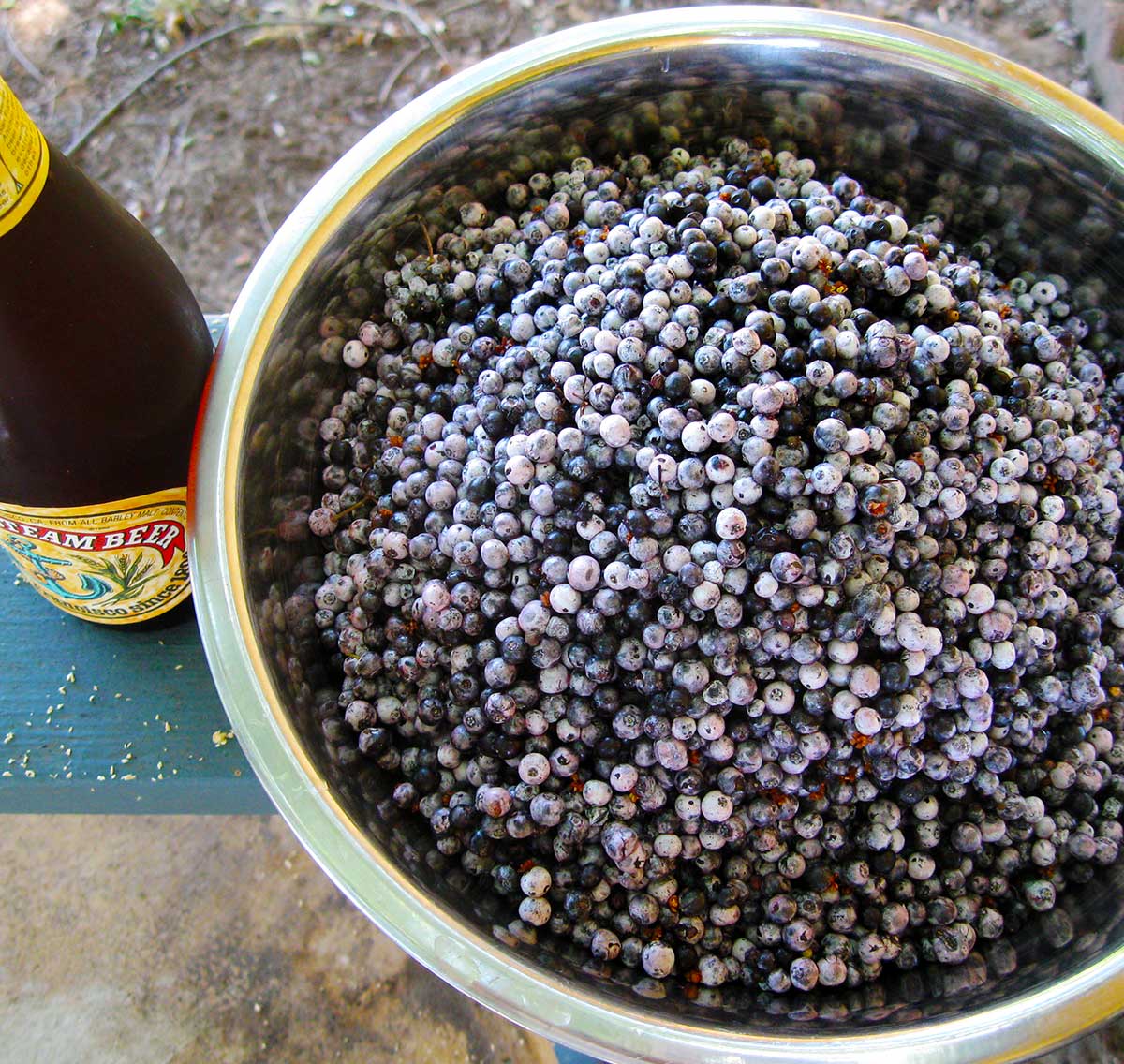
Cooking with Elderberries
What to do with all these berries? Admire them, to start. Poured into a large, flat Tupperware, they look like $10,000 worth of caviar: Shiny, tiny black orbs. So pretty! Dip your face close, and you will get the unmistakable aroma of winegrapes.
It was at this moment I realized just how good these could be in the hands of a competent winemaker — only you’ll never find one working with elderberries in California, as this place heaps so much scorn on “fruit” wines that I can barely mention them in public. Tyranny of the Grape, I call it.
I make elderberry wine every couple years. To do it right you need a lot of berries. I reckon at least 3 pounds per gallon, and 5 pounds per gallon is better.
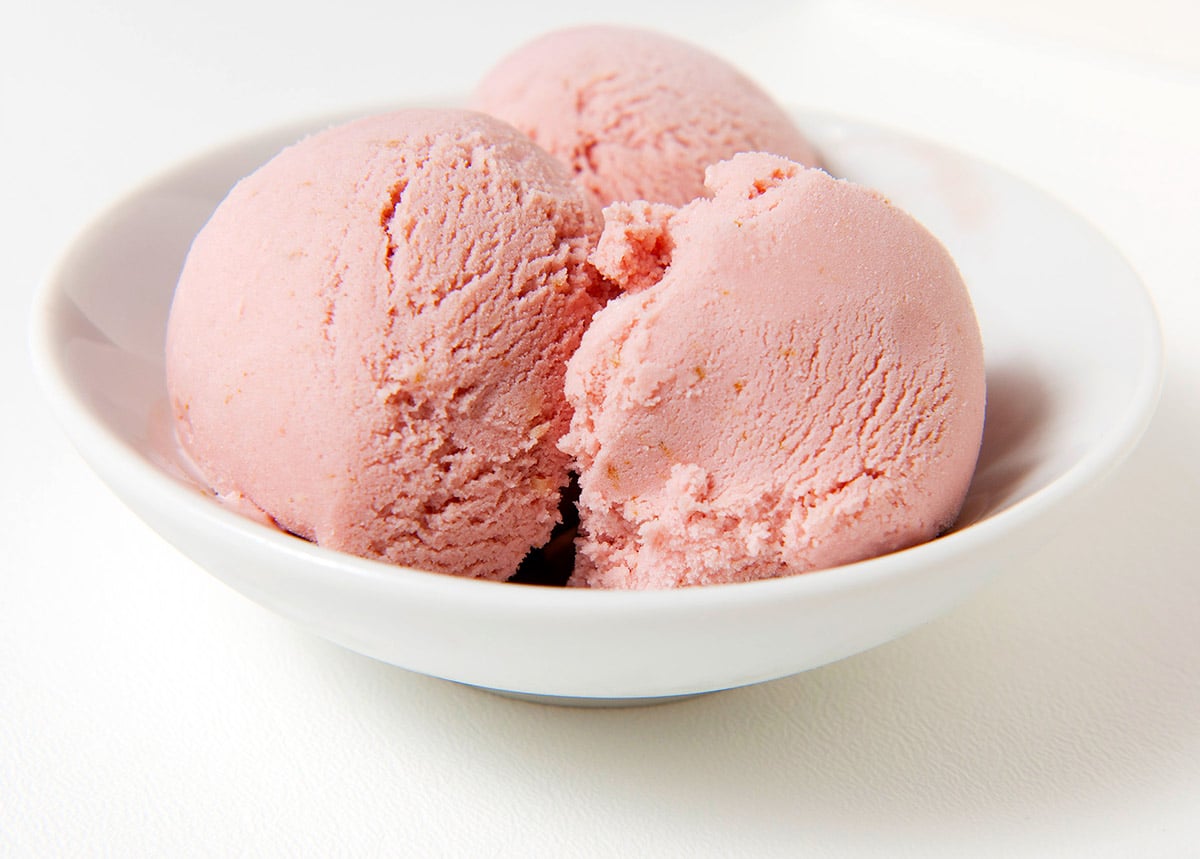
I also make elderberry liqueur with whole berries in vodka with lemon zest. It’s damn good with just a little bit of added sugar.
Elderberry syrup is a great base for the classic Cumberland sauce I make to go with wild game such as duck and venison. You can also use the syrup to make an Elderberry Ice Cream.
The British also make a curious condiment with elderberries called Pontack. It’s a little like a vinegary mashup between elderberry syrup and Worcestershire. It’s really good with venison and duck.
Preserving Elderberries
May favorite ways to preserve the harvest from elderberry season are the aforementioned syrup, wine, liqueur, and pontack. But after harvesting elderberries you can dehydrate them for another day. Set your dehydrator to 135°F for, well, a while. It takes up to 14 hours to get them leathery.
You can also pickle elderberries in a similar way to pickled blueberries.






Diane: I don’t worry about the tiny stems much, although I got pretty good at destemming everything — after about an hour’s work… As for toxicity, yes, elderberry stems are toxic. Not overly so, but enough to give you a stomach ache.
Oh, and I’d toss the green berries. I’d use only fully ripe ones.
Are the stems and somewhat green berries harmful or just bitter?
I have been desteming these berriesand many still have tiny stems attached and some berries are 1/3 green and the lower 2/3 blue to black do these need to be removed also? Would the stems not be removed during straining?
Joyce: The only things I can think of are that a) you picked some other sort of berry, or b) you had stems in the mix. I’ve never had bitter elderberries — tannic (felty) yes, but bitter no. I’m afraid I can’t suggest a fix, as bitter is a hard flavor to get rid of…
i have a question. i made elderberry jelly. it tuned out bitter. i went back to the berry to tasted them. the berries are bitter, which inturned made the jelly bitter. is there any fix?
joyce
An update to my own previous comment – I have searched more herbal websites and found more sound advice against using the stems due to higher content of the cyanotoxin. Ok, ok, I will spend the time de-stemming them to avoid a stomach ache.
Says who the stems are bitter and mildly toxic? I decided to try NOT picking berries off the stems, and made juice using whole heads of stems and berries. I will try it unless I can find documentation of a reason not to. If anyone has this info, Please do share. Thank you!
In the Suffolk UK and just harvested many little fiddly deep blue and juicy elderberries from the headgerow boundary in my garden I’m brewing up an apple ( using local apple juice) and elderberry jelly and have added sprigs of fresh garden mint for a little twist. Adding peel of a bramley cooking apple for pectin – so let’s see?
I live in PA where my family has a little patch of green out of town. We have several very fine patches of elderberries there and I would love to find a good recipe for elderberry pie. Anyone?
Your elderberries will be your best bet during the flu pandemic – from all that I’ve been reading, they could make a real difference – I’m planning on preparing mine for their medicinal benefits – still researching but at “such a time as this”, these little guys will be invaluable.
Thanks for the elderberry conversation! I grew up in the foothills of the Sierras. Every summer we went up the road towards Wright’s Lake and plucked bunches of the sweet ripe beauties. The berries in higher elevations are always sweeter than those in the valley. I never heard of any toxicity issues of ripe berries. Please tell me more!
These berries have an enzyme which prevents gelling. You really need to add a few unripe berries and/or a strip of lemon rind with the pith attached to boost the pectin levels.
I had the same problem with redcurrants until I discovered that the lemon rind works perfectly and gives a nice “lift” to the finished jam or jelly. I don’t like adding apple as it changes the texture – well to my little tastebuds anyway.
The bonus is that if you remove the rind at the end and let it drain on parchment paper, you have a tasty little snack (a sort of candied fruity chew) for yourself as well as delicious jam/jelly.
Elderberries up here (east slope of WA Cascades) are an August thing. They’re often ripening around the same time as mountain thimbleberries. I missed the flowers this year due to our Rocky Mt sojourn, but plan to nab a bucket o’ berries later in the summer. Great post, Hank!
Here in Pennsylvania, elderberries are just blooming right now. We won;t have ripe berries until late August or early September. We really have a profusion of bushes in my area, so I’ll be picking as soon as I spot them ripening.
Personally, I love elderberry pie and elderberry jelly. Your batch of jelly that didn’t jell would make a great topping for some homemade vanilla ice cream or added to some yogurt, if you don’t use all of it for Cumberland sauce. By the way, did you use straight elderberry juice, or did you add apple to the mixture? Many of the recipes I’ve seen use apples to increase the amount of pectin. I’ve done it both ways, but usually small batches, no no jelling problems.
I hadn’t considered the idea before, but elderberry liqueur would be really good; I’ve already got a batch of citrus liqueur working, and I’m waiting on local raspberries for the same purpose (among many other uses).
Josh: I was wondering about the beetles! As a newcomer it seems there is MORE than enough habitat for them now — elderberries are all over the place…and good advice on the red ones. The “powdery substance” is the bloom I mention, like a bloom on grapes.
Matt: You are right — I am not a jelly-making kind of guy, but what the hell! Why not.
Heebert: I was waiting for someone to use that line…
Will: I am leaning toward it. We’ll see.
Make wine! It is true that fruit wines are wrongfully, widely and viciously disdained. I’ve been looking, lately, for a source (anything, really) which both takes fruit wines seriously and gives them a useful treatment, above and beyond the usual beer-manual appendix. I’m curious to see what you’d do!
Thanks for the post! I also pass by an elderberry bush regularly and have been monitoring it’s progress. I haven’t yet decided what I will do with my little treasured pearls of fruit and with your addition to my growing list I’ve a dilemma. So many options, so little fruit.
Your mother was a hamster and your father smelt of elderberries!
Cool article.
You might be interested in a little anecdotal history – the prevalence of elderberries around here is a “new” phenomenon, by which I mean that ‘when I was a kid’ there were far fewer bushes around, but in the past 10-15 years, there have been a number of rehabilitation projects because of the endangered status of the Valley Elderberry Longhorn beetle (it’s nice to remember the unintended consequences of things like the Endangered Species Act).
Also, I’d like to point out that, at least around Northern California, the edible elderberries are mexican, or blue, elderberries (Sambucus mexicana), and are red when unripe, whereas the red elderberries around here, ripe or no, are toxic (the jury is still out on how toxic, but I don’t want to be the guy who finds out). I’ve yet to see them down in the Valley, but I have seen them in the Sierra. My advice is to stay away from the berry bunches unless you know them to be blue, or until they turn blue. It’s nice to get to know a place, and know which bushes will have blue berries, anyway.
I’ve found them to have a powdery substance on them when they are most ripe.
As for other things to do, I’ve read about folks frying the flowers, and elderberry pancakes.
whenever I think of elderberries I always think of Monty Python.. I don’t see you as a jelly making kind of guy, but I reckon it is going to be bloody good – seems like you are good at anything in the kitchen!
Looking forward to hearing what the berry-booze is like.